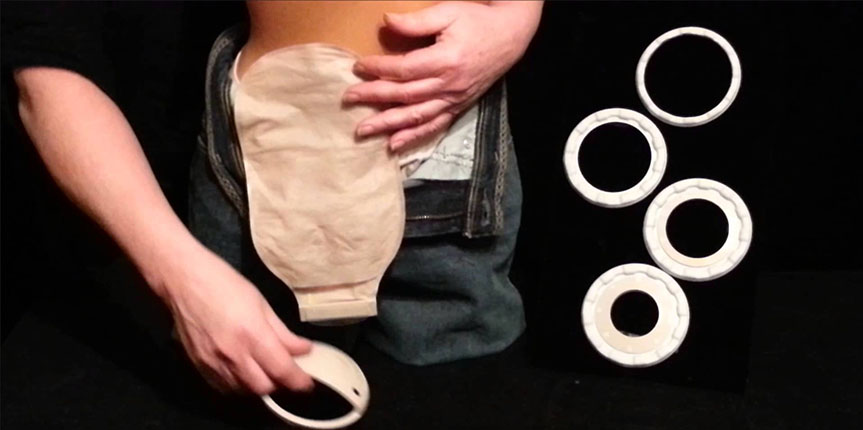Normal Stoma
A stoma is red in colour. This is because it is a mucous membrane, just like the mucous membrane inside your mouth. In fact, the red color indicates that blood vessels are bringing the needed blood supply to the area.
Stoma come in all different shapes and sizes – some are quite short and sit flat against the belly, while some protrude a little.
At first swelling is normal, but it should decrease over a period of 6-8 weeks after surgery.
Movement of the stoma is normal, and it may move in and out with changes in your position.
Stomas are fairly hardy, but should be protected from physical blows, tight clothing, and rigid objects.
There is no sensation in the stoma, so it is not at all painful to touch. However, it can be injured without pain. Always check your stoma with each pouch change, and report any change to your physician.
The stoma can bleed a little when being cleaned, especially in the beginning, but this is quite normal, and should stop shortly afterwards.
Stoma changes and their treatments
Change in Color (Ischemia/Necrosis)
This can be caused by an inadequate blood supply to the stoma. Sometimes a stoma will “pink up” as swelling decreases. If the stoma continues to darken–turns dusky blue, dark brown or black, you should report this to your physician immediately. If the stoma does not improve, surgical revision may be needed.
Disappearing Stoma (Retraction)
This is when the stoma pulls back into the abdomen which can be caused by scarring, adhesion or weight gain. Treatment may be the use of an appliance with convexity, topical products or surgical revision.
Protruding Stoma (Prolapse)
This is caused by weak abdominal muscles, and the bowel appears to hang out of the abdomen. Sometimes pushing the stoma back in (by someone trained) followed by use of a binder will help. Surgical revision may be needed as the stoma may lose blood supply or stop functioning.
Bulging Around Stoma (Herniation)
This is caused by protrusion of the bowel around the stoma. It is most noticed when sitting or standing. It is associated with weak muscles or obesity. Treatment may be weight control, increase of exercise slowly, exercises to strengthen abdominal muscles, supportive binder or surgical revision.
Stoma Blockage
Most commonly found with ileostomies, stoma blockages are obstructions caused by food and bowel contents. The signs of blockage may include cramps and stoppage of stoma output as well as swelling. It’s generally cured easily by drinking and bathing in warm water, which can relax the muscles to allow food to pass.
References
http://www.ostomysoftware.com/OstomyArticles/OstomyArticles032002.html


